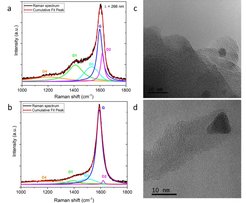Propane dehydrogenation (PDH)
Dr. Siamak Nakhaie

Propylene and hydrogen are two valuable products of non-oxidative propane dehydrogenation (PDH) via heterogeneous catalysis. Therefore, their production from cost-effective sources such as propane has attracted significant interest. Among various catalysts used for PDH, Pt-based catalysts offer remarkable propane conversion and propene yields, such that their utilization in commercial PDH processes has already been established at industrial scale.1 Nevertheless, like all other PDH catalysts, Pt-based catalysts suffer from substantial deactivation as a result of coking. However, factors influencing coking, the composition of the coke, as well as the possible changes to the Pt particles and their relation to deactivation, remain poorly understood. Furthermore, efficient regeneration – a recipe to remove coke and at the same time retain activity of the catalyst – remains stillchallenging in PDH.
In this project, we study the amounts and nature of the coke formed during PDH, as well as track the changes of Pt morphology and its effect on coking and activity of the catalyst. The general mechanisms of deactivation are investigated and subsequently, possible effective regeneration recipes are developed. We address these challenges by meticulously examining fresh, coked and regenerated supported Pt catalysts using various complementary multi-scalar techniques for both in-situ and ex- situ analysis and imaging.
Among several findings, for instance, it was revealed that the coke formed on the catalyst in the 2nd cycle after regeneration has a more ordered character (Fig. 1a and b) than the one of the 1st cycle, which is consistent with the highly decreased catalyst activity in cycle 2. In addition, transmission electron microscopy (TEM) revealed the formation of filamentous carbons initiated at the Pt particles, which led to their detachment from the support (Fig. 1d). The unsupported Pt particles are more likely to suffer changes such as sintering during regeneration, which is of high relevance for a decrease in catalytic activity during subsequent PDH cycles.2 Our results suggest that several interrelated factors such as formation of highly ordered coke, size and morphology of Pt particles play important roles in progressive deactivation of the catalyst within each PDH cycle and after each regeneration. In the PDH project we aim at fundamental understanding of the coking and deactivation mechanisms of supported Pt catalysts, which additionally serve to enhance the knowledge of catalyst design for alkane dehydrogenation processes with an optimized efficiency and stability.
In Collaboration with Dr. Hannah C. Nerl
[1] Z. Nawaz, Rev. Chem. Eng. 31 (2015) 413-436.
[2] C. H. Bartholomew, Appl. Catal. A 212 (2001) 17-60.
[3] A. Sadezky et al., Carbon 43 (2005) 1742.
